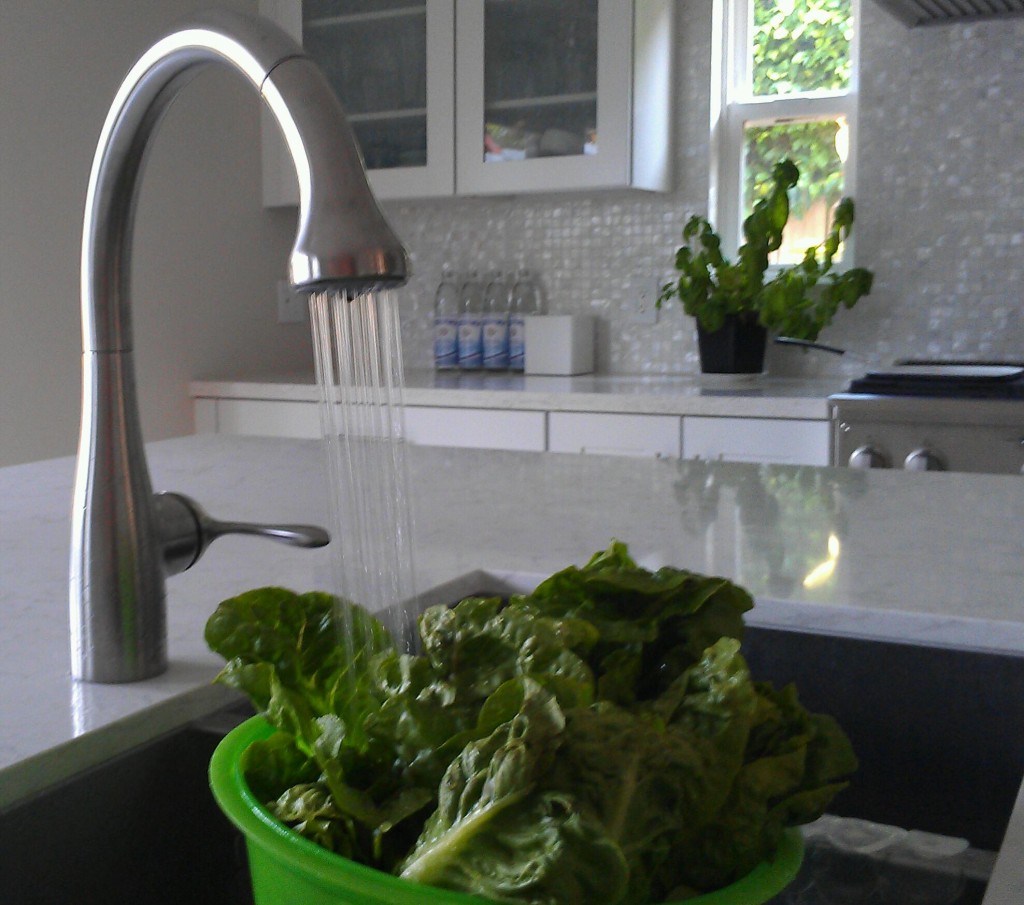
What’s the best way to wash your fruits and veggies at home to effectively eliminate viruses, germs, dirt, pesticides, and more in a safe and green way? Discover 10 common methods and determine which one works best for you.
It seems like every few months I hear some terrible story in the news about how something as healthy and seemingly safe as produce made people sick, because it was tainted with a nasty pathogen like E. coli or salmonella. Alfalfa sprouts seem particularly notorious because their growing conditions are often the perfect environment for promoting microbial growth and they’re eaten raw, but produce processed with contaminated water or fertilized with fresh manure may also be ideal candidates for food-borne illnesses according to the Center for Disease Control. Plus, produce at home can be a problem if it’s exposed to icky germs from using unsanitary knifes or cutting boards, or if it comes into contact with meat or fish juices, for example.
Now, considering I buy my fair share of store-bought produce, but also grow some of my own, I thought it was high time to explore some common ways to remove pesticides, dirt, bacteria, viruses, and waxes from produce at home. I really wanted to determine which ones seem the most effective and healthy, safe, and eco-friendly.
If you’ve wondered the same thing, read on to discover what I unearthed after doing some investigative research to figure out which products and methods work best. The information may very well surprise you!
As you’ll see, there are many good ways, so you may opt for more than one method and decide to use combination approach to cleaning your fruits and veggies. Let me know which one(s) work best for you or sound the most appealing. And if you have any additional tips or useful information, please share them by leaving a comment.
1. Chlorine Bleach
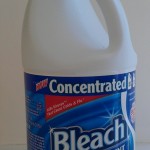
Bleach is often used commercially to sanitize surfaces and clean produce in processing plants, but it may not be the best, safest, or most eco-friendly choice for use at home.
Chlorine bleach solutions are a federally approved method (per regulation 21 CFR Part 173) for “sanitizing raw fruits and vegetables during the washing or peeling process” in food processing operations as described in this document by the Robert M. Kerr Food & Agricultural Products Center of Oklahoma State University. They do a great job of reducing bacteria and viruses by at least 98% and are extremely effective at reducing E. coli from lettuce according to these 2003 and 2013 studies published in the Journal of Food Protection, respectively.
But do your really want to wash something you eat with bleach? Because some fruits and veggies may be more porous or thin-skinned than others, they could easily absorb the chemicals found in bleach, such as additives like fragrance. Also, you could possibly add too much going well over the recommended limit of 2000 ppm. And if you’re soaking something, such as a head of lettuce or broccoli, for several minutes, it’s definitely going to absorb more.
Therefore, considering bleach is not healthy for you or the environment, it’s not anywhere at the top of my list as a safe produce wash at home.
2. Baking Soda
Baking soda, which is also known as sodium bicarbonate, is an alkaline salt that makes an eco-friendly and effective produce wash. It’s also one of the ingredients in many commercial washes, such as Fit Produce Wash.
The Environmental Protection Agency (EPA) considers it a natural biopesticide, so it’s especially great at killing germs. It’s also fantastic as a natural green cleaner for your home as I discuss in “5 Green Cleaning Products You Can Make with Baking Soda.”
To use it, simply add a few tablespoons of baking soda to a bowl of water when soaking your fruits and vegetables, which should be done a few good minutes before rinsing them with fresh cold water. Or, shake some baking soda on produce and scrub away with a produce brush. By the way, this method is especially great for things like musk melons, because their rinds have all kinds of nooks and crannies that love to trap microbes and dirt.
3. Commercial Produce Washes
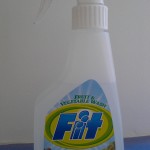
Fit Fruit and Vegetable Wash spray is 98% effective in reducing microbes and more according to the manufacturer.
You’ve probably seen Fit produce wash at your local grocery store as it’s a very popular commercial wash. According to the manufacturer’s website, the product removes “98% more pesticides, waxes, people-handling residues, and other contaminants vs. washing with water alone.” Also, a 2001 study published in the Journal of Food Protection showed that a prototype Fit produce wash reduced Salmonella from tomatoes better than other methods.
So, it definitely seems effective, but I was surprised with a few of the ingredients it contains, such as potassium hydroxide, which is used in many oven and drain cleaners.
Also, as I discuss below, I discovered that some other methods are just as effective as the Fit product and even cheaper and more eco-friendly, so you may not really need it — or want it. By the way, if you’d like more information about the Fit produce wash, check out my review.
4. Dishwashing Detergent/Soap
Soaps and detergents may wash away some germs and soil, but they also may leave behind fake fragrances, synthetic dyes, Triclosan, and other harmful chemicals — things you don’t necessarily want to be eating!
Many of these chemicals are associated with a host of health and/or environmental problems, so I recommend reserving the soap for scrubbing pots and pans and using something else instead that is food friendly.
The FDA would agree as it states that “Washing fruits and vegetables with soap or detergent or using commercial produce washes is not recommended.”
5. Hydrogen Peroxide
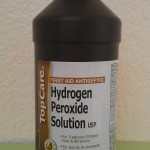
A small percentage of hydrogen peroxide mixed with water can reduce microbial populations when washing produce, but it may discolor it.
Hydrogen peroxide at a concentration of 0.5% is slightly less effective than chlorine bleach according to a 2003 study, plus it causes strawberries to discolor. Also, according to another study published in the Journal of International Food Microbiology that was done on whole cantaloupes and honeydew melons contaminated with E. coli and Listeria monocytogenes, a 2.5% concentration of hydrogen peroxide still left some pathogens on the fruit, whereas a combination of hydrogen peroxide and other three other natural food sanitizers (i.e., citric acid, sodium lactate, and nisin) was found to be much more effective.
So it seems hydrogen peroxide by itself is a fair to good produce wash (depending on the study you’re looking at), but it might be more effective in combination with other methods. What does this mean for you at home? Well, if you like using hydrogen peroxide, maybe follow it with something acidic like vinegar, lemon juice, or even distilled water to ensure thorough disinfecting.
6. Lemon Juice
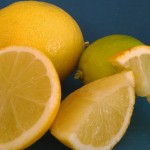
Squeezing a little lemon juice in a bowl of water and soaking your produce in it may help zap pathogens due to the citric acid content and low pH.
Lemon juice, which naturally contains citric acid, is used in green cleaning for its effective and eco-friendly disinfectant and bleaching qualities, so it makes sense that it would also be something to consider for safely disinfecting produce.
Although, I couldn’t find any scientific studies specific to using lemon juice in washing produce, I did find a few that addressed citric acid washes. For example, this 2010 Journal of Food Science study showed that leaving cabbage soaking in a 1% citric acid solution for 5 minutes significantly reduced microbial populations, but so did other methods.
Also, citric acid in combination with alkaline electrolyzed water (which you can make at home with a pricey alkaline water machine) was shown to cut down on microbes and enhance the shelf life of shredded carrots according to a 2011 study in the Journal of Food Microbiology.
I personally haven’t used lemon juice to clean that much produce, except for lettuce, but I’ve used it clean and remove faint odors from poultry and fish. It works every time like a charm!
7. Produce Brushes
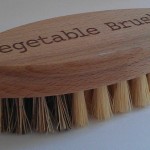
Vegetable brushes are effective for washing produce with thicker skins, such as melons, and are recommended by the FDA .
A not-so-official study done by Cook’s Illustrated that was reported on by NPR, showed that giving produce a good scrub with a produce brush reduced bacteria by 85%. So, it seems using a veggie brush in combination with another natural method would really get your produce clean in a very green way. Plus, it would help remove those not-so-appetizing waxes you often find naturally on cucumbers and artificially on apples.
I prefer the wooden ones with natural bristles, but the recycled plastic ones are available in a variety of snazzy colors and are another eco-friendly option as well.
8. Salt
Sodium chloride, which is simply table salt, in a 2% concentrated salt-water solution reduces viruses by 90% according a 2003 study in the Journal of Food Protection, but it isn’t as effective in reducing bacteria as vinegar. Therefore, salt wouldn’t be my first choice, but it’s a great “back-up” ingredient to keep in mind.
But do you know what I would use salt for? In combination with a little baking soda and water, it makes a great scrub for naturally cleaning, disinfecting, and bleaching cutting boards. (If you cut meat or poultry on your board, also spray it with vinegar or hydrogen peroxide after scrubbing it to disinfect it even more.) Note: After scrubbing and/or disinfecting your cutting boards, also thoroughly wash them with some green dish soap and hot water.
9. Vinegar
Vinegar could very well be considered the king of green cleaning as it’s great for so many household cleaning uses, including washing your fruits and veggies. According to the 2003 study published in the Journal of Food Protection, a 10% vinegar wash reduced bacteria by 95% and viruses by about 90%! Impressive, huh?
In the Cook’s Illustrated study a wash consisting of 3 parts water to one part vinegar reduced bacteria by 98% and was found more effective than scrubbing, using regular water, or antibacterial soap when it came to washing pears and apples. However, the study authors did use the vinegar rinse followed by a water rinse (most likely to remove any vinegar taste). In other words, they washed it twice! So maybe that process in combination with the fact they used more vinegar, is why they found it slightly more effective than the Journal of Food Protection study.
As I use vinegar to clean just about everything in my home, I really like the idea of using it to clean produce as well. I’d definitely rinse it off with water, though. So, I suggest putting some in a store-bought spray bottle under your kitchen sink. You’ll find yourself reaching for it often to clean your kitchen counters, cook top, stainless steel appliances, and more.
10. Water (Plain and Distilled)
Good old H2O often does the job and is what the FDA and several other sources recommend for washing your produce at home. It’s not perfect, but it’s obviously a safe and eco-friendly choice available to everyone.
It especially works well in combination with some gentle agitation as a 2003 study in the Journal of Food Protection showed. Just putting strawberries in some water and gently shaking them around for a couple minutes reduced microbial populations significantly. So, at the very least, shake those veggies and fruits around in a colander while rinsing them or in a bowl of water before enjoying them!
Also, another good idea is to leave your produce whole before washing it. It helps reduce microbial populations even further as a new 2014 study published in the International Journal of Food Microbiology shows.
But did you know that distilled water may even be better? As noted in this University of Maine article, a study done by the Department of Food Science and Human Nutrition tested distilled water, Fit produce wash, an ozone water purifier, and a food sterilizer. They found that distilled water and the Fit product were equally effective in reducing pesticides and microbes. In addition, they found distilled water was even better than the ozone water purifier and food sterilizer in zapping pathogens.
Therefore, hands down, distilled water seems like a clear winner it my book. It works. It’s safe. It’s green. It’s natural. It doesn’t leave behind any weird taste or residues. And it’s really inexpensive!
Updated on April 11, 2016
Copyright © Karen Peltier and Well Gal, 2014 – 2020. All rights reserved.
Photos © Karen Peltier and Well Gal, 2014 – 2020.
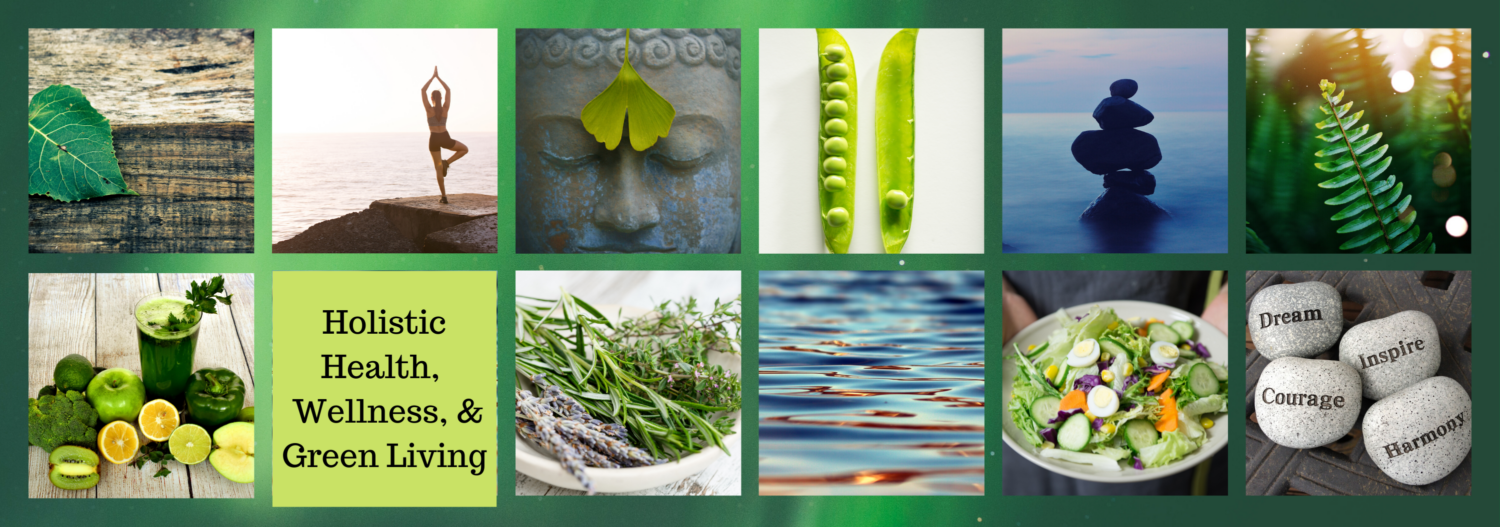
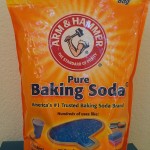
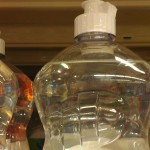
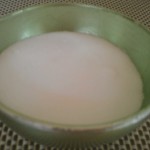
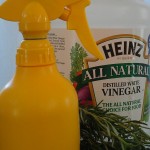

Thanks for the great info!
Nobody is talking about pesticides here. Is there any research to point to reduction of pesticides with any of these methods?
I’ve used Fit spray in the past but couldn’t seem to rinse it fully and didn’t enjoy the aftertaste. Now I am using Biokleen produce wash and it works very well. However, it’s hard to rinse on some produce.
I want to use distilled water if it were also to remove pesticides. We will have a challenge keeping enough distilled water on hand as we live in a dry climate and use it for a humidifier. Can you elaborate on how much you use to wash produce in?
I appreciate your article and the comments!
Is hydrogen peroxide toxic… can we mix distilled water with hydrogen peroxide… considering the current situation of corona virus we are living in…
Interesting article! We live overseas and were counseled in Costa Rica to use about 1 capful of bleach in a sink of water to disinfect–5 minutes for fruits and vegetables that would be cooked or peeled and 20 minutes for all others. We don’t notice the smell or odor of bleach when it is used like this. As for white vinegar, would other types of vinegar do the same– we have access to wine and apple cider vinegar in Chile– any difference??
Karen,
In your section on vinegar wash, you have the ratio backwards. Should be one part vinegar to three parts water.
Thanks for catching that, Jack. I do see that the Cooks Illustrated study has it as one part vinegar to three parts water so I just fixed it in my article.
Thanks for this useful information! I’ve been looking for natural ways to clean fruits and vegetables.
I am curious about distilled water. You cite two studies, one which speaks of efficacy of plain water, and another regarding distilled water. Is distilled water actually any better at cleaning fruits and vegetables compared to plain water?? If so, I’d be interested to know chemical/biological explanation as to why.
Thanks!
Thanks. That is really helpful information. Distilled water is so easy to use.
Warmly,
Dr. Erica
Hello Dr. Erica.
You’re welcome. And yes, distilled water really is so easy to use, so it’s worth keeping some on hand for cleaning produce. Works well for mixing with vinegar for general all-purpose kitchen and bathroom cleaning, too. 🙂
Karen
Wow I don’t know why anyone would consider using bleach to clean their produce. We usually just make sure we wash our produce thoroughly with water. Going through all of these chemicals seems like a lot of hassle.
Hello Johnny.
Precisely. No need to use all the chemicals! Plain old distilled water works wonders.
Karen
Very interesting. I’ve never heard of distilled water being any better than regular water at cleaning. I think I’m going to keep some under the sink. I usually use vinegar to clean fruits and veggies. If you rinse berries in a vinegar and water mixture then let them dry, they lose the smell and they keep longer. Great for those expensive, fragile, yummy but extremely perishable goodies. Thanks for the great information.
Hello Kirsten.
I’m glad to hear how you’ve had success rinsing berries in a vinegar and water mixture. Good to know the vinegar smell goes away. I’ll have to try that.
In my household, though, I usually don’t have much trouble hoping berries will keep. The kids eat ’em up within a day or two! (Hmm. Maybe I need to set some aside for me.)
Also, storing distilled water within reach or under the sink is a very good idea. That way it’s more likely to be used. As I have limited space under my sink, I use a water bottle to store some in and keep the rest in the garage.
Thanks for stopping by and sharing your thoughts. I appreciate it!
Karen
Hi Karen,
This is a great review of all the different options.
Out of the ones you suggested vinegar is one of my favorites for cleaning most things.
Colloidial Silver is my first choice when it comes to cleaning food.
I also like to eat at least 2 tablespoons of coconut oil with food over the day which takes care of any microbes, bacteria and fungus internally.
Thank you for sharing your knowledge!
Cheers,
Yorinda
Hi Karen, I wouldn’t like washing my fruit and veg with chlorine – although they put chlorine in our drinking water here, which I don’t like either. Baking soda would leave a bad taste wouldn’t it? like vinegar as well. Distilled water is definitely the best! Thank you for keeping us informed.
Hi Julieanne. You’re welcome. I’m glad you think distilled water sounds like a winning way to wash your fruits and veggies, too! It’s such a simple, “clean,” effective, and inexpensive solution to removing bacteria, viruses, and dirt from our store-bought or even home-grown produce.
These are some great ideas, Karen. I’ve tried a few of them, but never thought of the distilled water solution. That’s really great to know.
I’ve used commercial food cleaners like FIT, but they are really pricey as you point out. Baking soda works well, but is high in sodium which absorbs into your blood stream through gum tissue when you chew on veggies washed in this manner. So, not the best in my view. Vinegar is great, but definitely leaves a strong taste.
So, my new favorite is distilled water. Thanks for this valuable tip!
Hi David. Thanks for sharing your thoughts on the different ways you clean produce, naturally. I never thought about that aspect of baking soda when cleaning my fruits and veggies, so it’s something to take into consideration. Thanks for bringing it up.
By the way, I’m glad to hear distilled water is your new favorite!
I’m looking for ways to simplify and cut down on costs — not something I have to buy or spend more time doing!
We wash our produce with tap water and a brush. Because our well water has not been tested for a few years, we also sometimes rinse again with distilled water. We have a water distiller with a 24-gallon stainless steel holding tank. We’ve been drinking and cooking with distilled water for the past 28 years.
Hi Willena. I agree that simple and inexpensive is better when it comes to washing produce. And the studies agree that washing and scrubbing produce with tap water is very effective. Finishing it off with a final rinse of distilled water as you sometimes do is also a good idea. Sounds like you got it down pat!
Hello Karen…..My Family and I enjoy camping every summer….On our travels, my wife prides herself on being able to fix a very healthy meal while camping without many conveniences for cleaning vegetables….I have seen her use vinegar on occasion and she uses water and her brush most often….So far we haven’t encountered any problems….I will be sharing your other methods with her so she may have some more alternatives to what she is already doing….Thanks….Smokey
Hi Smokey. Thanks for sharing how you wash your fruits and veggies while camping — a task I have found a little challenging, especially when I have limited water on hand! Maybe a spray bottle full of vinegar water set aside just for that purpose would be good? It could also be used for disinfecting other things while camping.
Whew – When you started with the Chlorine Bleach all I could think of was an older guy who was in front of me in the supermarket several years ago who must have been a regular because when he got to the checker she said to him “Oh Hi, back for some more bleach for your Martini’s? – I couldn’t resist so I asked him if he really put bleach in his Martini’s and he said Yes – that it improved the taste tremendously. Thinking he was pulling my leg I smiled and went along with it – but later when the checker was checking me out – she confirmed what he said…..
So naturally I thought when I started reading your post .. Ok here we go again – another strange/interesting use for Chlorine Bleach … that I will never try.
So, I was really happy when I read on and learned my vege brush and tap water will continue to do the job for me.
Hi Marty. Wow! Can’t believe someone would actually add chlorine bleach to a martini! Yikes!
Wow, at first I thought I was going to start eating frozen vegetables. Glad to know that water is fine. I use a brush on things that are grown in dirt – like potatoes or carrots. But I mainly use water from our well. I’d hate to eat a salad and start blowing bubbles because I didn’t wash all the soap off the lettuce!
All the best,
Leslie
Hi Leslie. Glad you realized frozen veggies aren’t the answer! You’ve been doing a fine job of washing you’re produce all along. 🙂
I second the thought about chlorine (yikes).
I’d be curious if there is a solution we can make using lemons for produce washing.
Hello Shirley. Thanks for writing in. Adding lemons to water to make a solution would probably only last a short period of time — about as long as fresh refrigerated lemonade. However, if you were to add in some vinegar to the solution it may last a little longer, because vinegar makes it difficult for many microorganisms to grow. Of course, the amount of vinegar you add would be key. I’ve used a citrus-vinegar solution to clean with, but haven’t tried it for washing produce. So, if I wanted to use lemons to clean produce, I’d probably stick with adding fresh lemon juice or lemon juice concentrate to water when you wash your fruits and veggies.
WOW!
I feel over doing it, is confusing. We come from a line of traditional people. Most of us, cook all the time and must use fresh content. I feel, nothing we do will keep someone from getting sick 100%. We do just like most places in USA. Water and rum.
Sometimes, keeping it simple goes a long way. Using what is natural, and free. That is our way for decades in the kitchen. None, of us have gotten sick with such things?
I would say, if you go overboard. You will load your body up, with deadly man made chiemicals. There is no doubt about that. If water, has worked for over thousands of years. Why not keep it simple, and save some money. Hey, you have to build you immune system up. That is only done, with exposure in little doses. So, just think about that one.
I have always drank, tap water. Even, overseas in Europe. That was a two week painful style. Yet, my body got so strong, it was never again an issue where I went in the world.
Thank you for bringing this issue to light. I would love to have someone share what is to be done with each type of veggie and fruit to have a longer stay period. Also, how to store each one, like tomatoes, potatoes? In the fridge or where?
Hello William. Thanks for stopping by. Yes, I agree with you that cleaning produce can be overdone and that keeping it simple works best, which is why the FDA suggests using plain water and produce brushes instead of things like commercial produce washes and detergents. The less chemicals the better for sure.
You mentioned something about “water and rum.” Can you elaborate a little bit? How have you used it to clean your fruits and vegetables? Sounds interesting!
Also, thanks for idea about how to wash and store each type of fruit and vegetable. That’s definitely an important topic as well and one I’m sure we have all wondered about. I may address that in a future post, so stay tuned!
I made an attempt to share a way to clean produce and veggies. Based, on the type of item. Cold water with rubbing method.
1. Taking natural free water from our sinks. Placing desired amount of produce or fruit in strainer.
2. Having clean hands. Just softly rub item and then soak in Rum. We use 151 dark.
This has a wild effect on the natural ability to keep it fresh and clean. I love the method.
Making sure not to soak it in solution of Rum longer than 3 minutes. You can and will turn it into a different end product.
Just something wild we picked up from being on various islands. It works and I do not question it. I do not drink hard liqueur. Yet, this has no side effects with my system.
I also wanted to share with all your readers and self. I have found a location to share. You and all of us can refer back to. This, being how to store our produce and fruit.
Just take a look and nothing to purchase. This is all done without plastic. The natural green thing.
http://www.washingtonsgreengrocer.com/everything-else/storage-tips/how-store-vegetables-fruit-without-plastic.htm
I pray this will help. Also, everyone have a safe Memorial Day. Me being an Air Force Vet. I will be in a parade. Yes, but this year only on a float.
Love the post. Yikes though do people actually consider using bleach to clean their veggies and fruit? I personally use a produce brush, rinse and let it sit to dry over night. No matter what though i always rinse because who knows who might of breathed or touched my produce prior to my home. Great suggestions!
Hello Kyle. Yup, some people use bleach and so do some big commercial operations. Yucky, right?
You bring up a good point about how it’s important to dry fruits and vegetables prior to storing them. Thanks for your comment!
Still can’t imagine using something like bleach haha! Thanks for the reply 🙂
Karen,
I am so glad you decided that water, particularly distilled water, is the best for washing vegetables and fruit. At first, I thought you might say a combination of lemon, baking soda and vinegar because they are often used alone for cleaning. I use vinegar and baking soda to clean the drains. I use vinegar and bleach to clean the floors. But I would not use vinegar or bleach to clean the food I am consuming. Ugh!
Thanks for an informative article.
Warmly,
Dr. Erica
Hello Dr. Goodstone. Thanks for sharing how you clean produce. Glad to hear you’re on board with using distilled water for cleaning your fruits and veggies. It really is so easy and effective, not to mention healthier than some other methods!
Karen,
very nice information you gathered here.. I am 100% vegan and spo use a lot of veggies and fruit..
for year now I have been using Vinegar and Hydrogen Peroxide.. but did not think of the Baking Soda,,, great addition to my healthy and clean lifestyle 🙂
Your info is a wonderful source to come back to 🙂
Thanks a lot again.
_nickc
Hello Nick. Thanks for stopping by and letting me know what has worked for you all these years. Glad to hear that in addition to using vinegar and hydrogen peroxide to clean your fruits and veggies, the baking soda may fit your healthy and clean lifestyle, too. If you try it, let me know how it works out.
Karen,
Thank you again about the baking soda…I made more research and wowowo…I am so glad I added it and I LOVE TO THANK YOU for pointing it out to me!
Thanks again.
Nick C
You’re welcome, Nick ! Glad the baking soda worked out as an effective method to wash your fruit and veggies. 🙂